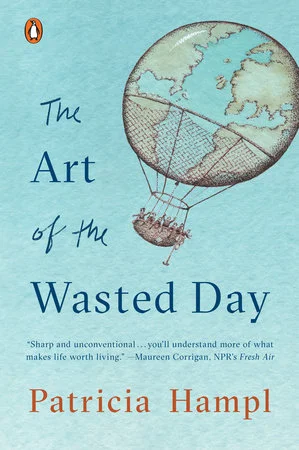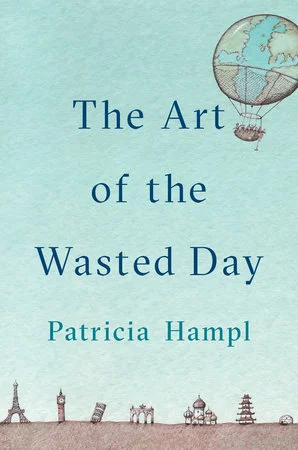The art of the wasted day
by Patricia Hampl
Penguin Books, 2018. $17.00
ReviewED by Whitney (Walters) jacobson
Minnesotan writer Patricia Hampl examines the worth of leisure in her most recent book The Art of the Wasted Day as she attempts to assess what she has gained from her life’s corporeal and cerebral undertakings.
The book’s title is a bit of a misnomer as the text does not offer advice on how to successfully waste ones day, but instead follows Hampl’s examinations into the choices of people who pursued lifestyles based on fascination and fulfillment regardless of cultural value. Folded into the journeys are scenes from Hampl’s life where she grapples with conflicting personal desires to both efficiently complete tasks and idly saunter through reveries.
Fans of Hampl’s The Florist’s Daughter looking to find a subsequent enchanting plunge into her life will be disappointed with the diverted focus in her newest book: “Suddenly I realize—surely because of the sad woman in the teashop—that what I will remember most form this effort . . . is the people who were supposed to not matter, not really, the extras of contemporary life” (88).
The Art of the Wasted Day carries forward the sumptuous detail-driven sentences from Hampl’s other books: “Life conceived—and lived—as a to-do list. This is the problem. I sense I’m not alone. Fretful, earnest, ambitious strivers—we take no comfort in existence unfurling easefully as God intended (my mother speaking, a meddling-midwesterner who knew how to let things unfold without rush, her head wreathed with vagueness, the smoke of her cig circling upward)” (16). However, it disappoints with long voyages filled with a keen education on leisurely personas: “Mendel’s contribution to science, unlike Darwin’s, didn’t stray into theoretical matters. Yet his study of the reproductive patterns of the edible pea (green versus yellow, smooth skinned versus wrinkled) revealed the inner workings of cellular evolution that remained vexingly elusive to Darwin” (140), that the audience ultimately is not made to care about as Hampl does. Perhaps the slowed momentum is her subconscious push for repose, though.
The sudden loss of her husband, Terrance Williams, additionally threads through the text in an understated manner. While the extent of her disclosure regarding her grief is certainly Hampl’s prerogative, mentions of her husband’s death often appear as aloof observations made to fit her discussion of leisure, rather than addressing the event as the foundation of lamentation alluded to in the final travel recounted. As such, the references feel like a teaser, as though she wants readers to care, but only so much.
Nevertheless, as she does so often and does so well, Hampl concludes the book on a resounding note, beautifully commemorating the never-ending journey of weaving together the threads of passion and necessity.
Whitney (Walters) Jacobson is an Assistant Professor at the University of Minnesota Duluth. She holds an MFA in Creative Writing from Minnesota State University Moorhead. Her poetry and creative nonfiction have been published in Up North Lit, After the Pause, and In the Words of Womyn International, among other publications. She maintains a curiosity in memoir and the themes of feminism, water, generations, blue-collar work, and grief.

